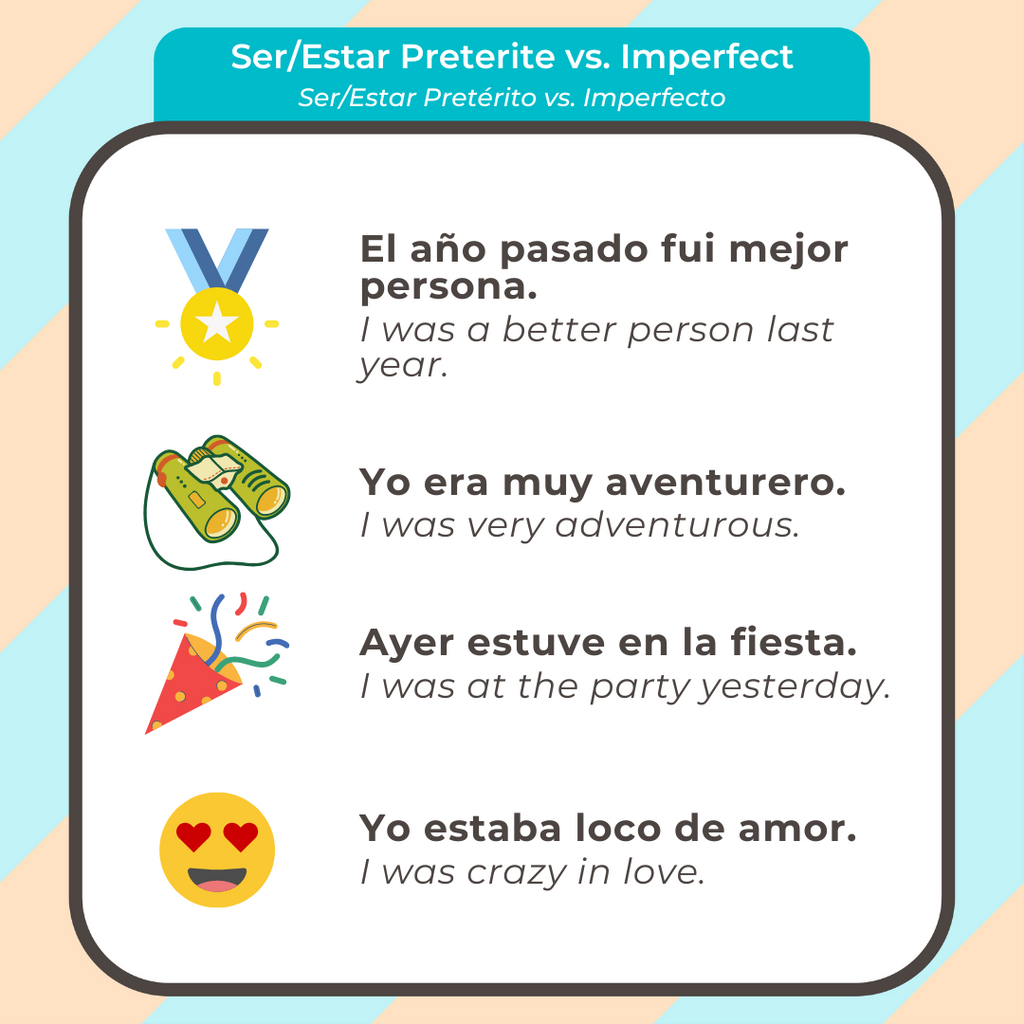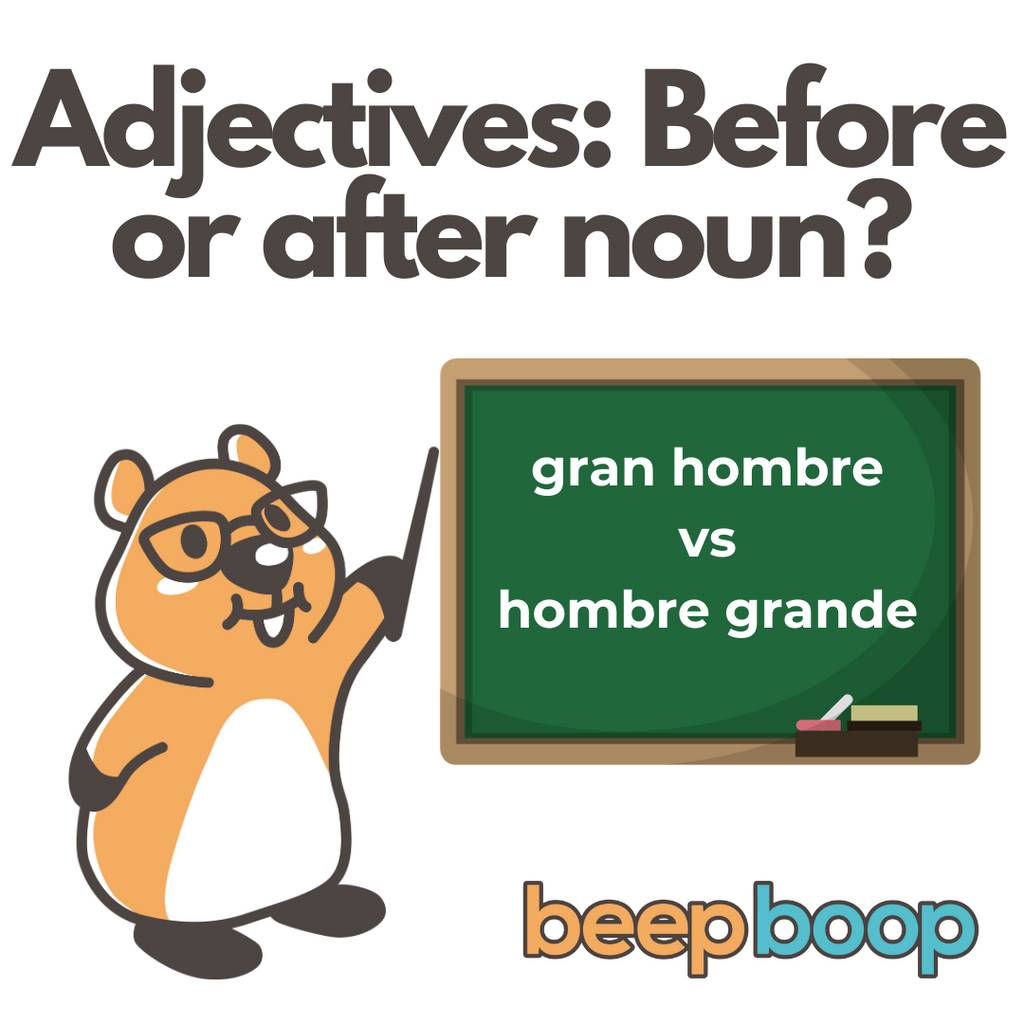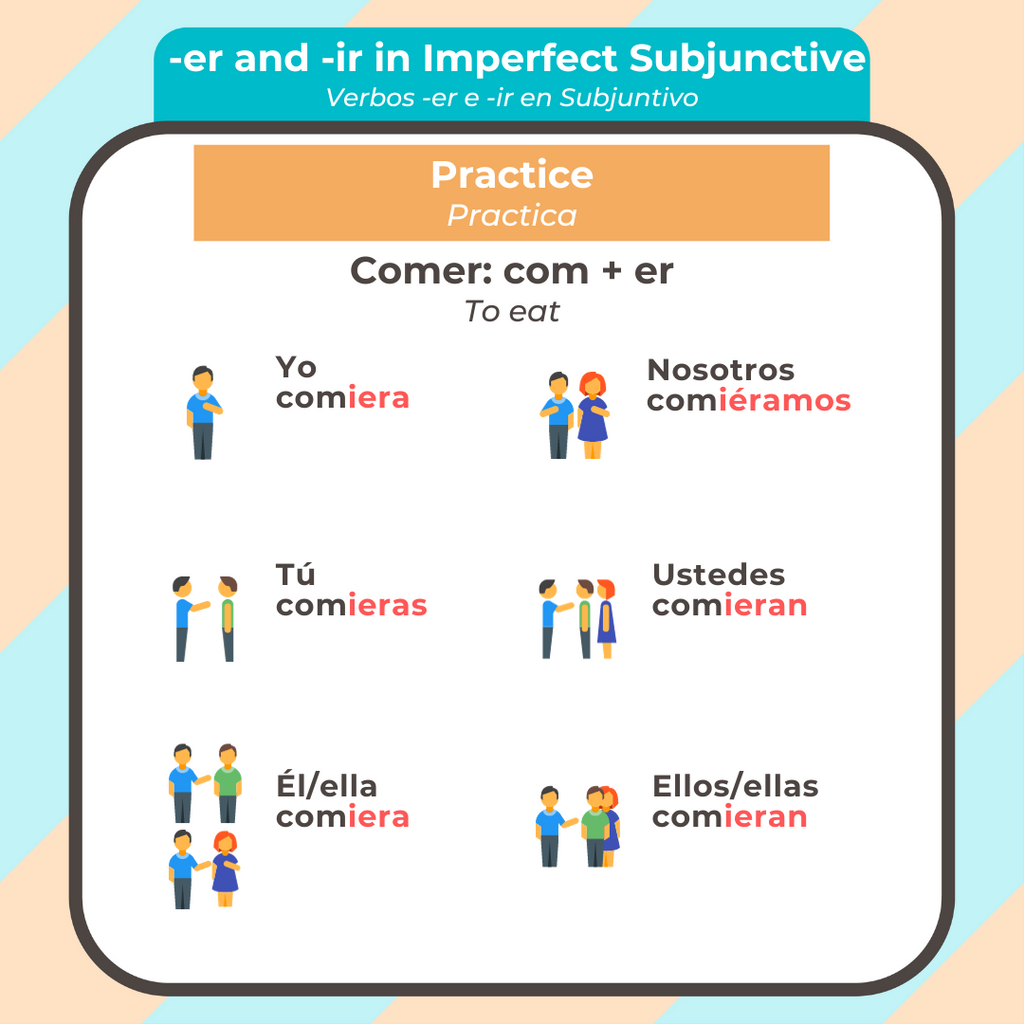 Verbs “ser” and “estar” in Preterite and Imperfect Tenses: The Spanish verbs "ser" and "estar" both mean "to be," but they are used in different contexts. Distinguishing between them can be tricky, especially when it comes to past tenses like the preterite and imperfect. Our new drills ensure that you understand their conjugations and their nuances.
Verbs “ser” and “estar” in Preterite and Imperfect Tenses: The Spanish verbs "ser" and "estar" both mean "to be," but they are used in different contexts. Distinguishing between them can be tricky, especially when it comes to past tenses like the preterite and imperfect. Our new drills ensure that you understand their conjugations and their nuances.
Drill Topic Highlight: Ser/Estar Preterite vs. Imperfect
 Verbs “ser” and “estar” in Preterite and Imperfect Tenses: The Spanish verbs "ser" and "estar" both mean "to be," but they are used in different contexts. Distinguishing between them can be tricky, especially when it comes to past tenses like the preterite and imperfect. Our new drills ensure that you understand their conjugations and their nuances.
Verbs “ser” and “estar” in Preterite and Imperfect Tenses: The Spanish verbs "ser" and "estar" both mean "to be," but they are used in different contexts. Distinguishing between them can be tricky, especially when it comes to past tenses like the preterite and imperfect. Our new drills ensure that you understand their conjugations and their nuances.



